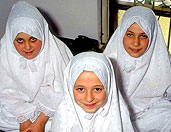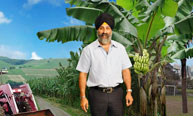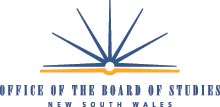Making multicultural Australia
for the 21st century
... assisting young people, parents, teachers and the community to explore Australia's cultural diversity, tolerance and anti-racism.
multicultural Research Library »

Research our free library of more than 3000 pages. A major anthology of documents that includes key reports, legislation, academic writing, media reports and book segments.
Search all library files by document, video, audio and image files - by author, subject and category.
Student Activities and Quizzes »
How much do you really know about Australia?
- early history? »
- 19th-20th century history? »
- Australians today? »
- Indigenous Australians? »
- multicultural policies? »
- Australia's population? »
- Aussie colonial timeline? »
- holidays and festivals? »
- Australian identities? »
Quizzes on cultural diversity throughout Australian history.
Lesson Ideas for Teachers »
Browse lessons or search by subject area or by learning stage.
e-Learning and the Classroom »
A growing collection of 'downloadable' useful files, including simple graphic PowerPoint files for classroom presentations ...
focus Areas »

The Purpose of this Site »
One of Australia's leading sources of quality educational resources on multiculturalism.
Teaching resources and strategies to understand cultural diversity and tolerance.
More than 3500 pages of articles, research, teacher guides, lesson plans, audio interviews, video clips, Australian multicultural artworks.
What's New on this Site »
New Timeline screens
There are new sections in the Timeline:
Victoria's cultural diversity

Victoria as the heartland of diversity (before 1900)
Before the arrival of white British settlers in the mid 1830s, the area now known as Victoria was inhabited by 36 Aboriginal community and language groups whose members were connected by marriage and kinship. More...

Victoria under White Australia
The Immigration Restriction Act of 1901 that established the White Australia Policy was one of the first laws passed by the new federal parliament. More...

Victoria's resurgent diversity
Embarking on the post-war reconstruction of Australia, the Government abandoned its earlier fixation with “Britishness” and actively pursued a mass migration program from Europe, championed by the first federal Minister for Immigration, Arthur Calwell. More...

Victoria discovers multiculturalism
The Whitlam federal Labor Government, elected in 1972, changed Australia’s immigration and citizenship policies, finally ending discrimination on the basis of race, colour or nationality. More...

Making multiculturalism work
By the late 1980s the Labor government had established a strong ethnic affairs policy, with close links to the labour movement. It had created support for various organisations such as migrant workers’ centres in some of the major trade unions. More...

Embedding multiculturalism in Victoria
By the time the Labor Party returned to government in Victoria in 1999 under Premier Steve Bracks, the national government under Prime Minister Howard was moving quickly away from previous policies on multiculturalism. More...

Victoria's Changing Communities
By 2006 the top ten source countries for migrants to Victoria were: India, New Zealand, China (not including SARs and Taiwan), U.K., Philippines, Sri Lanka, Vietnam, Malaysia, the Sudan and Afghanistan. More...

Religious diversity in Victoria
Australia is a secular society that separates church and state. It also protects the rights of people to religious freedom. More...

Art and Cultural Diversity in Victoria
Cultural diversity is often experienced and expressed through the arts, Whether it be in the performances at inner city venues such as La Mama or Boite, or in the Victorian Art Centre's Mix it Up program, the arts build community, open up understanding, and challenge prejudices. More...
Queensland's cultural diversity
-

Colonial Queensland ...
The first recorded contact by Europeans with Queensland was by the Dutch ship Duyfken in 1606 near Weipa on the Gulf of Carpenteria.
-

Queensland's Island trade ...
The growing resentment among Europeans against non-Europeans, focusing in Queensland on the Chinese, the South Sea Islanders and to a lesser extent the Japanese, had already found expression in the 1885 Election Act.
-

Assimilating into Queensland society ...
Federation brought many cultural changes to the new state, not the least of which was an inflow of immigrants from southern Europe who replaced the Islander and Asian workers in the sugar industry.
-

Queensland's emerging diversity ...
The 1970s were a time of dramatic change in Australian society. White Australia had been abandoned by governments of both conservative and Labor perspective, and policy changes following Australia’s experience with the Colombo plan meant that permanent Asian immigration would begin.
-

Queensland's multicultural turn ...
Since the early 1990s Queensland governments have become increasingly involved in advancing the benefits of cultural diversity to Queensland.
-

Combating racism in Queensland ...
The settlement of northern Australia was part of an expanding drive by white Europeans to invade and take control of lands that had belonged to Indigenous peoples for millenia.
-

Queensland's Chinese communities ...
In all likelihood, the Chinese knew about Australia well before Europeans arrived.
-

Queensland's New Millennium ...
Looking back, we can see that Queensland discovered multiculturalism step by step.
-

Religion, values and spirituality in Queensland ...
Societies and the communities that make them up are held together through shared beliefs and rituals.
-

Asia and Queensland ...
Asia encompasses a very large geographical area, and many dozens of nations and cultures.
-

Islam and Islamophobia ...
Since 9/11, has it been "open season on Muslims" in Australia?
What is Islamophobia and is it racism? -

Refugees and Asylum Seekers ...
What are the facts and the myths about asylum seekers?
What do children in detention draw? -

Terrorism ...
Look at the Timeline of September 11, 2001.
Who is a terrorist?
Contemporary Issues
multicultural history of Australia »
Timeline:
Individual timeline screens, each with audio commentary, images, video and supporting documents.
-

Before the Australian Nation »
Indigenous Australia before and after European invasion and settlement ...
-

White Australia »
Forming a "racially pure democracy" through post-war immigration ...
-

From Assimilation to Multiculturalism »
The end of white Australia ... the mobilisation of ethnic communities ... ethnic rights ...
-

Multiculturalism in Practice »
Conservative multiculturalism ... SBS ... the Blainey debate on immigration ...
-

Transforming Multiculturalism »
An office for multicultural affairs ... access and equity ... multicultural arts ...
-

Towards the New Millennium »
Globalisation ... the landmark Mabo decision ... race hatred legislation ...
-

This Generation »
Steps toward reconciliation ... Islam ... the Australian Multicultural Foundation ...
Chinese-Australian History (1788-1988):
View a detailed visual presentation of the history of Australia's Chinese community (1788-1988) through the Australian Museum's 50-metre long "Harvest of Endurance".

"Harvest of Endurance" »
multicultural Video »
-

in Advertising ...
Perspectives on multiculturalism from an Optus TV advertisement.
-

Archival footage ...
Voices and pictures from the period of post-war immigration.
-

TV Current Affairs ...
Paul Keating speaking in Redfern in 1992 on Indigenous issues.
-

Performance ...
"Flamenco Dreaming" incorporating Aboriginal music and dance.
-

Documentary Excerpt ...
John Howard in 1988 challenging the concept of multiculturalism.
multicultural Images »
Artworks ...





Archival Images ...





... Cartoons, Newspaper Headlines, Photographs, Posters, Promotional Images.
multicultural Documents »
Search by document category to read collections of Articles, Book Excerpts, Charters, Exhibition Texts, History, Information Kits, Information Pamphlets, Legislations, Letters, Media Statements, Parliamentary Debates, Policy, Publicity, Reports, Speeches, Statistics, Strategy, Submissions, Audio and Video Transcripts.
... or by subject - Contemporary History, Cultural Studies, Demographics, Early History, Economics, Education, Human Rights, Immigration, Indigenous Issues, Languages, Legal Issues, Media Studies, Politics, Religion, Sociology, The Arts.
Developed by:
In partnership with:
New research is added by Dr Andrew Jakubowicz of the University of Technology, Sydney (UTS).
















